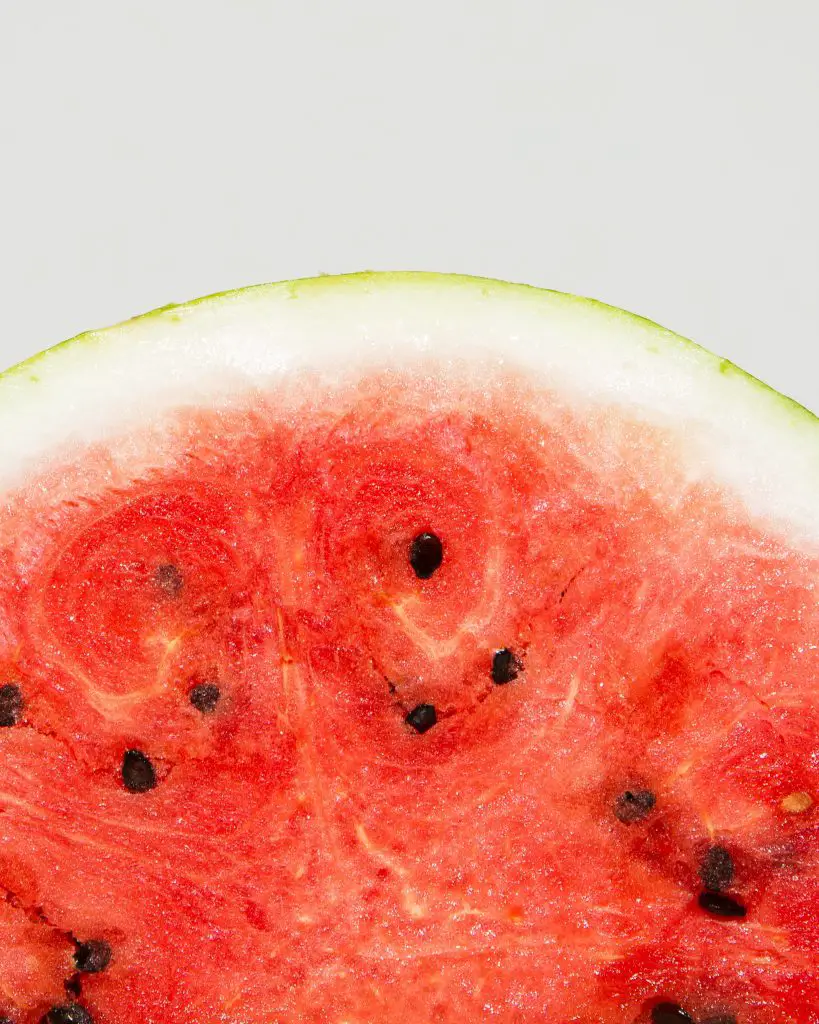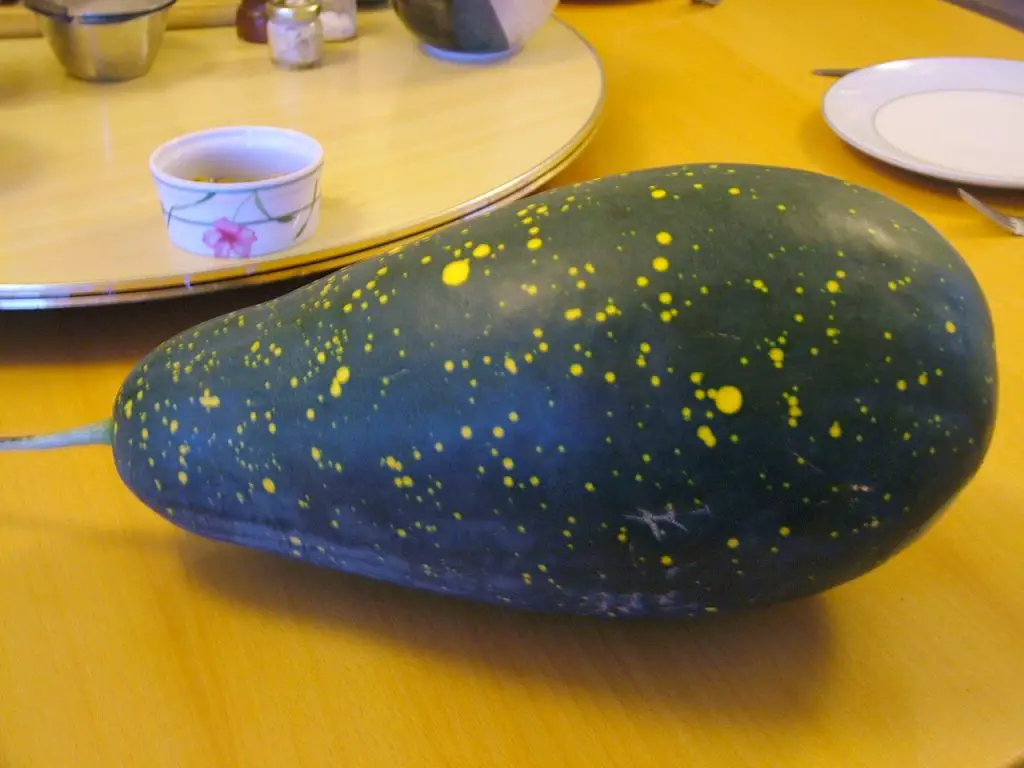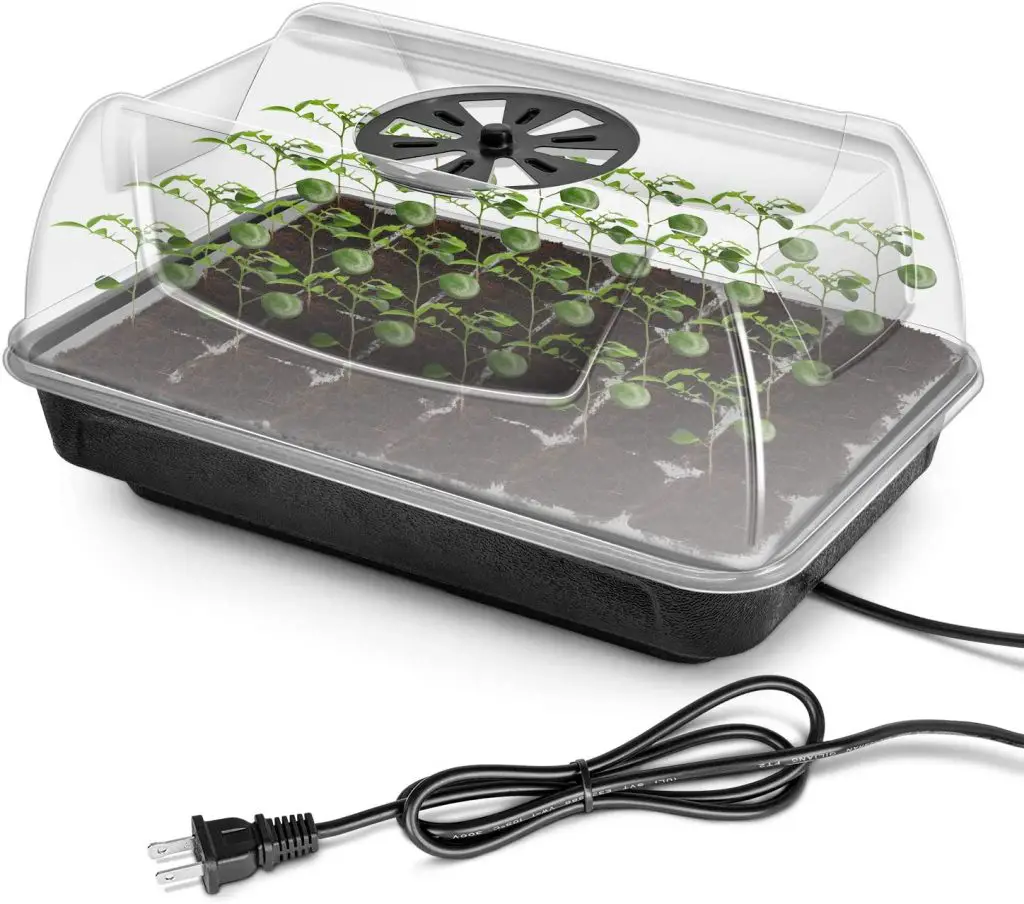Does Watermelon Grow Underground? Watermelon is a popular summer fruit that is eaten widely throughout the world. However, you may have wondered how this fruit is produced and where does it grow? Does watermelon grow underground? Or above ground and on what sort of plant?
Watermelon does not grow underground it is produced on a trailing vine which in most cases sprawls along the ground in a way similar to pumpkin plant. The size of the vine can reach a length of up to 60 ft in some cases however this is dependent on the particular variety being grown. Generally, varieties that produce smaller fruits have shorter vines.
The majority of commercially produced watermelon are large varieties that can generally be categorised as picnic watermelons. This is a term that was coined to describe how the watermelon is used. Traditionally large watermelons were taken to outdoor gatherings and eaten as a dessert. Due to the size of some of these picnic watermelons, which can reach up to 40lbs (20kg) in weight, these large gatherings would only require 1 melon, hence the name picnic watermelons.
However, there are many other varieties that do produce much smaller fruit which are generally considered to be much more suitable for the home gardener. The smaller varieties, which are as little as 1 lb (0.5kg) are known as icebox watermelons because of their ability to fit into an icebox.
The other types of watermelons that are sold wide are the seedless varieties which do not contain the traditional black seeds, instead, they only have small white seeds which are edible. These varieties are generally relatively large in size and could also fall into the picnic variety.

How Are Seedless Watermelons Grown?
You may wonder how seedless watermelons are produced given that they have no seeds. Seedless watermelons are actually grown from seed that is hybridized from two specific varieties. This hybridization or cross-pollination produces a seed which has additional chromosomes that are not normally found in common watermelon varieties.
Due to the presence of additional chromosomes, there is a mismatch in the number of pairs of chromosomes present which prevents cross pollination of the flowers produced from the seed. As there is no pollination that occurs none of the large black seeds, which are used to grow the next generation of watermelons, are produced within the fruit, hence a seedless watermelon is produced.
To grow seedless watermelons the farmers need to repurchase the seeds every year that are produced from this hybridization process. Hybridization of seeds is a common practice in commercial farming which is used to optimise the traits of the fruit produced though not all hybridizations are designed to stop the production of seeds. To read more about this click here.
About Watermelon
Watermelons are from the cucurbit family which includes things like corn, zucchini, and pumpkin. However, watermelons differ from most other members of this family because they originated in Africa rather than in the Americas. This resulted in watermelons being introduced into Europe much earlier than all of the other cucurbits.
Due to this early introduction, the watermelon has been grown widely in across Europe. This is led to the development of a huge range of watermelons that are suited to cooler climates. One particular area that was known for the development of watermelon varieties was Russia which was able to develop varieties that were more suited to cooler climates.
The best known of these varieties is Sweet Siberia which is a variety which performs well in trials conducted. This variety Is among the highest rated for flavor and yield. In trials conducted by the University of California they found that this variety produced 8 to 10 fruits compared to an average of 2 to 4. This variety is a yellow fleshed variety which is the other group of melons that we’re not mentioned above.
In addition to these yellow flesh varieties there is also some novel watermelon varieties called “stars and moon” which have that name because they have yellow markings on a green melon that resemble the stars and moon. An example of this is shown in the picture below.

Can You Grow Watermelon At Home?
Watermelons can be easily grown at home however I would highly recommend that you select varieties that produce moderately sized fruit that are between 2 and 6 lb in size as they are generally much easier to eat rather than the varieties that are grown at the local supermarket which are enormous.
As mentioned previously one of the most popular varieties is Sweet Siberia which is ideal for the home gardener because it produces a large number of melons that are smaller in size. This means that many of the fruit can be stored whole outside of the fridge.
If you are interested in growing watermelon at home we would suggest visiting seeds now as they have a broad range of heirloom variety seeds which will allow you to grow some unusual varieties that are not available in the supermarket and also you can keep the seeds to replant melons every year. See the flyer below.
How To Plant Watermelon Seeds
Watermelons are frost-sensitive plants that will take approximately 120 days to produce fruit from the date that the seeds are planted. Due to the frost-sensitive nature of the plants and the fact that the plant requires warm conditions to thrive most gardeners plant the seeds in a seed tray which are kept indoors in the early part of the season. Planting typically occur in early to mid spring which allows for a late summer harvest.
To start the seeds off fill a seed tray with good quality seed raising mix and plant the seeds at a depth of 0.5 inches (1 to 2 cm) in the mixture. If you are using a modular seed tray it is recommended that you plants 2 to 3 seeds per cell to ensure that there is at least one plant in each cell.
The seedlings will take approximately 7 to 14 days to appear at which point you can thin out the weaker seedlings out if more than one plant has germinated. The plants will generally need to spend approximately 6 weeks in the seed tray before they can be planted outside into the garden.
Planting Watermelon Seedlings In The Garden
Once the seedlings have reached a reasonable size they can be planted out into the garden however this should only occur when the outdoor temperatures reach 59 to 68°F (15 to 20°C). However, if you live in a region where the weather is somewhat variable you can consider using cloches or row covers to increase the temperature around the plant which will allow you to plant it out a little bit earlier.
If you are considering purchasing a row cover the one we recommend is the growsun row cover because it is relatively tall which means it can accommodate a wide range of plants not just watermelons. To see the latest price on Amazon click on the link below.

Increase Your Strawberry Crop Using Grow Bags
When planting out into the garden the plants should be spaced approximately 3 feet apart in a sunny location that gets at least 6 to 8 hours of sun per day. In terms of soil conditions, the plants prefer rich, moist, and free-draining soil which has plenty of nutrients. If you are unsure about the level of nutrition in your soil it is advisable to dig in a bag of compost before putting the seeds into the ground.
Once the seeds are in the ground a thick layer of mulch should be applied that is approximately 2 to 4 inches thick along with snail bait which will ensure that seedlings are not eaten within their first few weeks.
After the plant is established the main thing that you need to do is to ensure that the plant is watered regularly and any weeds that appear are removed.
Harvesting Watermelons
As mentioned earlier in the article you can expect to be harvesting watermelons in most regions in late summer. However, identifying when watermelons are ripe can be a little bit tricky but there are a couple of common signs to look for. The first is that the stem that is attached the fruit will be dried up, The second is that the section of the melon that is in contact with the ground will be initially white and as it ripens it will change to a yellow colour.
The third test is commonly used is to tap the melon and listen for a hollow sound. If all of these three things occur then the melon will most likely be ripe and ready to pick.
I hope you found this article useful, if you have any questions please leave them in the section below.
Relevant Articles
What Are There Different Types of Watermelon?
How Many Watermelon Per Plant?
What is The Best Watermelon To Grow?


